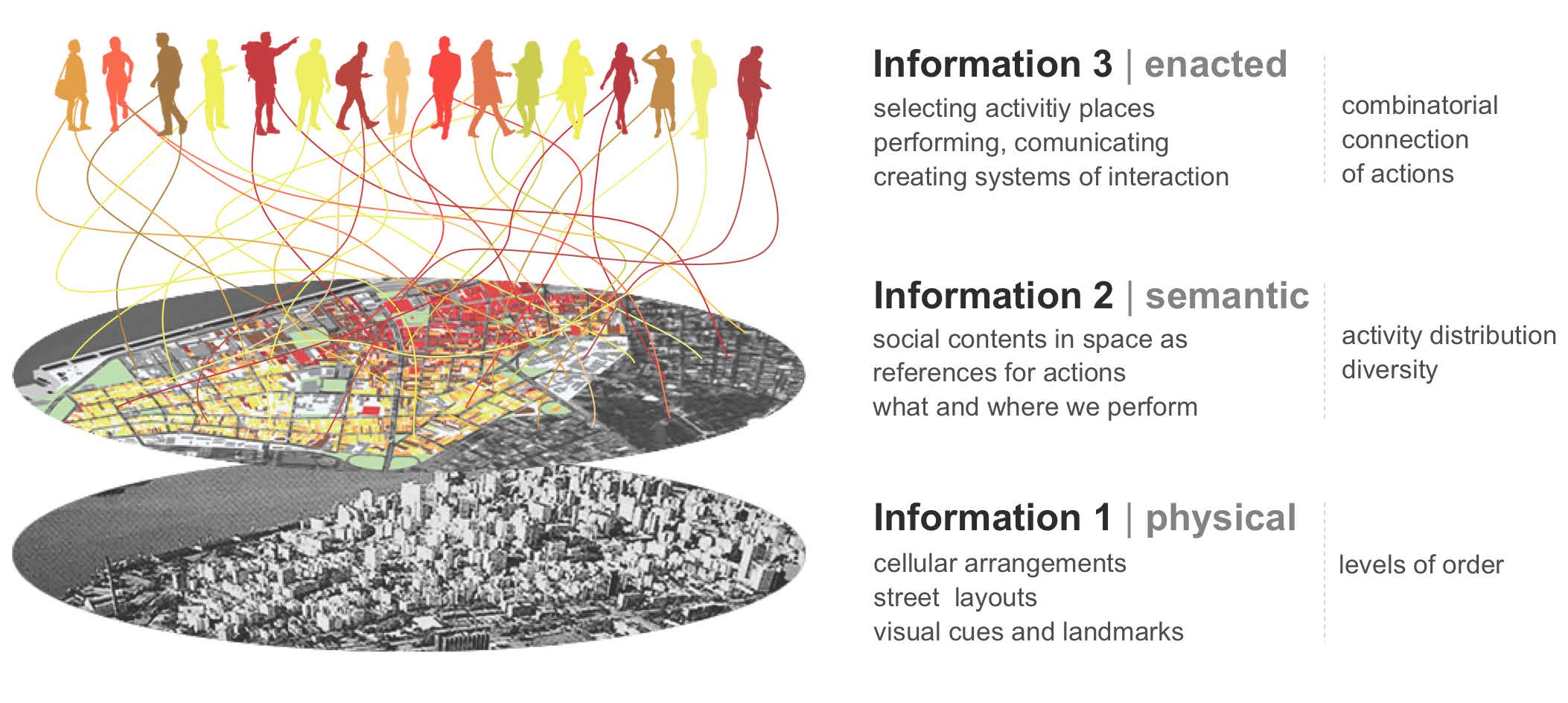From physics to the social sciences, information is now seen as a fundamental component of reality. However, a form of information seems still underestimated, perhaps precisely because it is so pervasive that we take it for granted: the information encoded in the very environment we live in. We still do not fully understand how information takes the form of cities, and how our minds deal with it in order to learn about the world, make daily decisions, and take part in the complex system of interactions we create as we live together. This paper addresses three related problems that need to be solved if we are to understand the role of environmental information: (1) the physical problem: how can we create and preserve information in the built environment? (2) The semantic problem: how do we make environmental information meaningful? And (3) the pragmatic problem: how do we enact environmental information in our lives? Attempting to devise a solution to these problems, it proposes a framework to approach how information bridges minds, environment and society, and helps us create large-scale systems of interaction.

